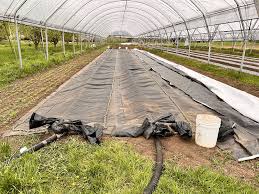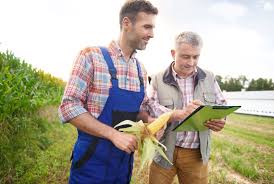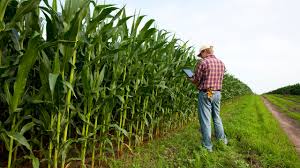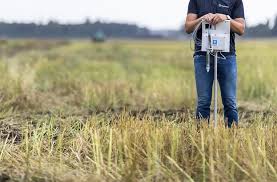Risks that cannot be assessed quantitatively in terms of financial loss cannot be insured. The impact of risks and the severity of their impact are essential for risk assessment. Risks must be evaluated in relation to their potential severity of impact after identification. Generally, the assessment focuses on negative impacts, such as damage or loss, and the probability of the occurrence of the risks.
Meaning and Components of Risks in Agriculture
Risk assessment is a systematic process for identifying and evaluating events (i.e., possible risks and opportunities) that could affect the achievement of agricultural objectives, positively or negatively.
A robust risk assessment process forms the foundation for effective risk management in farming enterprises. Although awareness of risk is important, proper management requires the assessment of the risk being considered. Agricultural risks (and their impacts) are assessed by quantifying three main variables: hazard, vulnerability, and exposure.
A. Hazard

Hazard refers to the categorization of the type of risk being considered—for example, weather, price fluctuations, pests, policies, or market conditions. Quantifying the hazard involves assessing three sub-variables:
1. Likelihood/frequency: This refers to how often or likely the risk is to occur. Probability estimates should be made, which help determine how frequently a hazard might affect farming operations. Reliable data can help express probability as a number, ratio, or percentage. This should be documented using ranking levels, considering cumulative probabilities for listed causes.
For example, if there are multiple causes for a single hazard, the probability of occurrence increases. Farmers and farm managers should document hazard occurrences on their farms to assign probabilities. The frequency of hazards can be categorized as follows:
i. Frequent – occurs often, continuously experienced
ii. Likely – occurs several times
iii. Occasional – occurs sporadically
iv. Seldom – unlikely but could occur
v. Unlikely – assumed not to occur
2. Severity: This refers to the impact of the loss from a risk and measures the amount of loss against its frequency. The frequency of loss helps determine its value to the farming enterprise.
Severity indicates how grave the loss will be for the farm or agribusiness. The severity assessment should be based on the worst possible outcome. This is expressed in terms of the impact on farm operations, personnel, materials, facilities, and the environment.
3. Spatial extent: This refers to how widespread the impact of the risk is, such as the number of people, villages, towns, or regions affected.
B. Vulnerability
Vulnerability is an estimation of the potential impact of a realized risk, considering the assets affected and the current capacity to manage the impact. In agriculture, vulnerability may vary depending on factors like crop types, livestock breeds, soil conditions, and management practices.
C. Exposure
Exposure is the initial step in assessing risk and involves identifying the resources (personnel, equipment, crops, livestock) that might be affected by the hazard. Exposure can be categorized by:
i. Time: How long are resources exposed to the hazard?
ii. Proximity: How close are the resources to the hazard?
iii. Volume: How many resources could be affected?
iv. Repetition: How often might the hazard recur?
Although exposure is a risk component, it does not directly assign a level of risk. However, it is essential to consider exposure potential when determining levels of probability and severity. In agriculture, exposure often depends on factors such as seasonal timing, crop and livestock growth stages, and local agricultural variables, such as irrigation and soil conditions.
Read Also: Agricultural Tillage Practices
Risk Quantification in Agriculture

Risk quantification involves calculating potential financial losses based on assumptions and variables. Agricultural risk quantification is influenced by the timing of the loss event and the farming calendar, which affects vulnerability.
For example, crop vulnerability changes with growth stages and seasons, and localized variables play a significant role in interpreting agricultural risk.
Potential Severity of Impact of Risk
Risk assessment aims to inform decision-making, particularly in planning and implementing risk management strategies. The best sources of information for these decisions include educated opinions and available statistics. However, determining the rate of risk occurrence can be challenging due to limited statistical information on past incidents.
In agriculture, assessing the severity of impact on intangible assets, such as soil quality or farmer experience, is complex. The valuation of assets, particularly for smallholder farmers, requires careful consideration in risk assessment. Risk quantification often produces information crucial for prioritizing management decisions.
One widely accepted formula for quantifying risks is:
Risk Magnitude = Rate (or Probability) of Occurrence x Impact of the Event
This formula helps quantify risks in agricultural enterprises by considering the probability of an event and its potential impact on farm operations.
Read Also: Maggot Feeding: Can You Feed Fishes with Maggots?
Composite Risk Index

For the composite risk index, the above formula can also be used by rewriting it as follows:
Composite Risk Index = Impact of Risk Event x Probability of Occurrence
The impact of the risk event is commonly assessed on a scale of 1 to 5, where 1 and 5 represent the minimum and maximum possible impact of the occurrence of a risk. The impact of the risk is usually expressed in terms of financial losses.
However, the 1 to 5 scale can be arbitrary and need not be on a linear scale, given the fact that financial terms are used for the losses. Similarly, the probability of occurrence is assessed on a scale from 1 to 5, where 1 represents a very low probability of the risk event actually occurring, and 5 represents a very high probability of occurrence.
This alignment may be expressed in either mathematical terms (e.g., event occurs once a year, once in ten years, once in 100 years) or in narrative form (e.g., event has occurred here very often, event has been known to occur here, event has been known to occur in the industry).
The 1 to 5 scale can be linear or non-linear, depending on the decisions made by the subject-matter experts in risk assessment. The composite index can take values ranging typically from 1 through 25, and this range is usually arbitrarily separated into three sub-ranges.
The overall risk assessment is categorized as Low, Medium, or High, depending on the sub-range containing the calculated value of the composite index. For instance, the three sub-ranges could be defined as 1 to 10, 11 to 20, and 21 to 30.
In general, estimating the probability of risk occurrence is difficult because past data on frequencies are not readily available. Similarly, estimating the impact of risk is challenging, as it is often difficult to estimate the potential loss in the event of risk occurrence.
Furthermore, the magnitude of these factors can change depending on the adequacy of risk avoidance and prevention measures instituted by the organization. Changes in the external business environment also affect the factors.
This underscores the importance of the risk manager periodically reassessing risks and adjusting mitigation measures as necessary. Similarly, changes in environmental variables such as procedures, technology, schedules, budgets, market conditions, and the political environment typically call for reassessment of risks.
Elements of Decision Making Under Risk
Decision-making under risk involves probabilities, measures of variability, expected values, and expectations. Many farmers use these concepts, often without recognizing them. The following sections are designed to help farmers recognize and understand these elements of decision-making.
Crop yields, annual average prices received by farmers, and other economic outcomes occur much like the normal curve distribution. The average value tends to be the most frequent outcome, while pessimistic and optimistic values are much less frequent.
Whether outcomes exactly follow the normal curve is relatively unimportant. In decision-making, it is crucial to remember that yields or prices near the average are much more frequent (more likely) than either very high or very low prices or yields.
Measuring Variability
Variability of outcomes is generally associated with risk, and riskier situations tend to have greater variability of outcomes. While the average outcome is the most frequent or likely in normally distributed outcomes, it does not provide information about variability.
The range (the highest and lowest values), combined with the average, offers some insight into variability. However, comparing variability between crops or prices can be difficult. The coefficient of variation is a statistical measure of variability that considers all values for yields or prices, not just the high, low, and average. The coefficient of variation allows for comparisons of variability among crop yields or prices—the lower the coefficient of variation, the lower the variability.
For example, assume corn yields averaged 1100 kg per hectare with a coefficient of variation of 15%. For soybeans, yields averaged 350 kg per hectare with a coefficient of variation of 10%. In this example, soybean yields are relatively less variable from year to year than corn yields, as indicated by the smaller coefficient of variation.
If yields are distributed like a normal curve, two-thirds of the time, soybean yields would be expected to fall within plus or minus 10% of 350 kg (i.e., between 315 and 385 kg per hectare). In contrast, for corn, the range is plus or minus 15%, or between 935 and 1265 kg per hectare.
About one-sixth of the time, yields would be below these lower levels, and about one-sixth of the time, yields would be above these levels. Therefore, optimistic outcomes, such as corn yields over 1265 kg per hectare or soybean yields over 385 kg per hectare, would be expected one year in six.
Pessimistic outcomes, such as yields below 315 kg per hectare for soybeans or 935 kg per hectare for corn, would also be expected to occur one year in six.
Do you have any questions, suggestions, or contributions? If so, please feel free to use the comment box below to share your thoughts. We also encourage you to kindly share this information with others who might benefit from it. Since we can’t reach everyone at once, we truly appreciate your help in spreading the word. Thank you so much for your support and for sharing!
Read Also: Measurement and Definition of the term water yield






